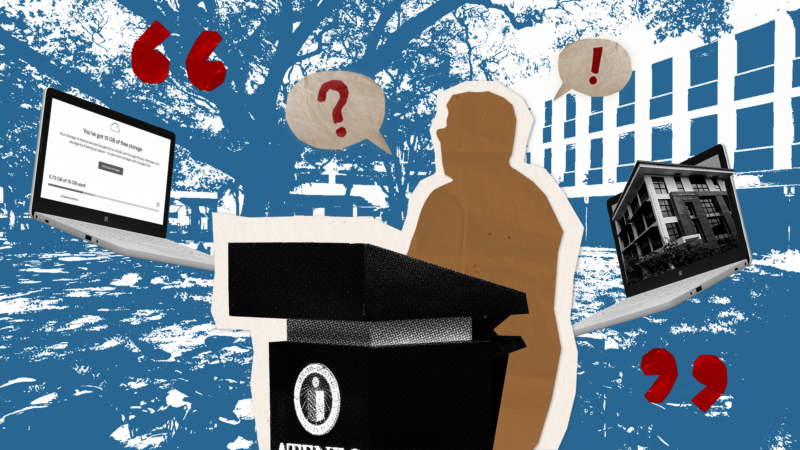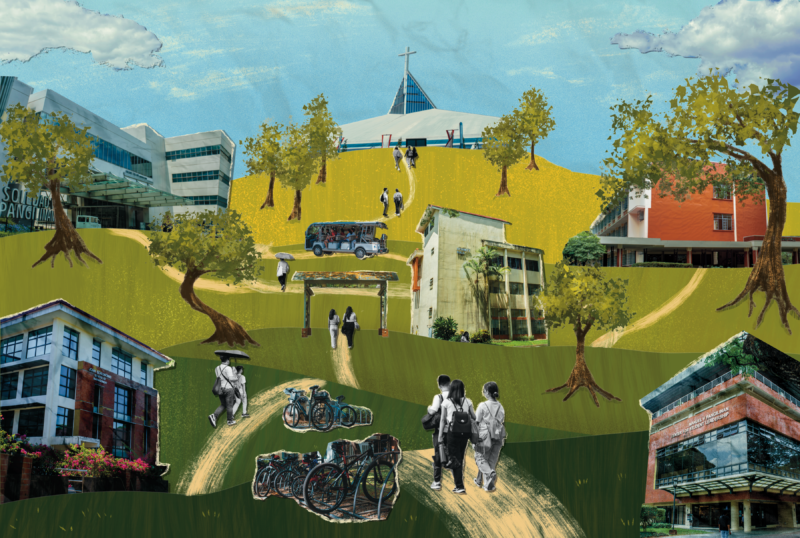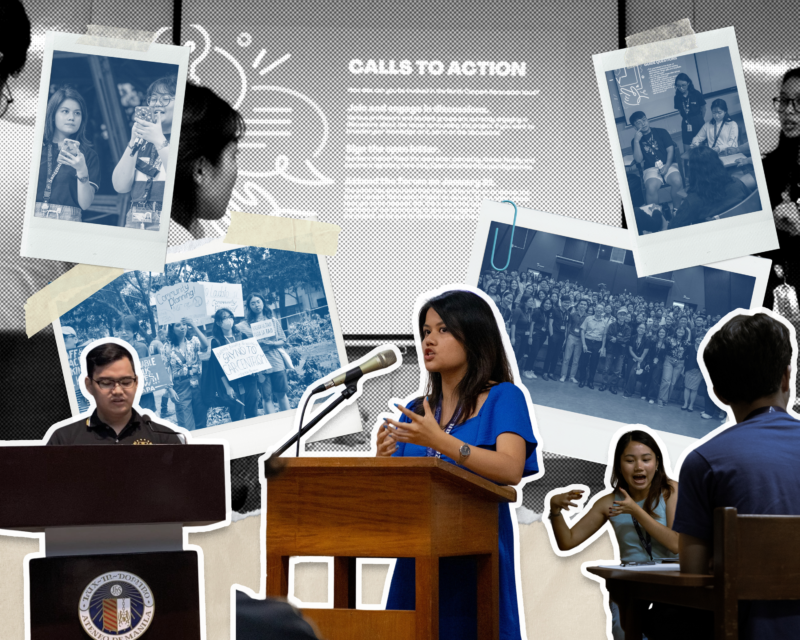TO LESSEN the workload of juniors, the National Service Training Program (NSTP) underwent a set of changes in schedule under the new core curriculum to be effective this academic year.
In an email sent by the Associate Dean for Student Formation (ADSF) during Intersession for AY 2019-2020, sophomores taking up Theology 12: Theology of the Catholic Social Vision in the first semester were asked for their consent to move three units from NSTP originally slated for their third year to the first semester of sophomore year. The remaining three units of NSTP will then be attached to the Social Sciences 13: The Economy, Society, and Sustainable Development course in third year. Students whose courses take up Theology 12 in the second semester of sophomore year also received this email last September 2019.
According to ADSF Leland Dela Cruz, PhD, Theology 12—the equivalent of the theology course that requires students to undergo immersion in the old core curriculum—was also moved from fourth year to second year. Moreover, immersion hours will be credited under NSTP.
Aside from this, the email sent to sophomores taking Theology 12 also indicated an option for students to take either NSTP or join the Reserve Officer Training Corps (ROTC) for their Civic Welfare Training Service (CWTS) in second year. However, it was emphasized that choosing ROTC would entail taking on extra work since immersion is still a requirement for Theology 12 regardless of whether they choose NSTP or ROTC.
Due to the implication of these revisions, the ROTC program had a drop in the usual number of recruits, with this year’s recruitment only yielding a total of 36 new cadets as opposed to the average number of 60 per year.
NSTP integration
Dela Cruz emphasized that with the altered curriculum for NSTP, the workload of NSTP will be more integrated with other courses. “Students still enroll for the units of NSTP CWTS 11 and three units of NSTP CWTS 12. It’s just that the work in CWTS is now fully integrated with Theology 12 and [Social Sciences] 13,” he said.
He added that crediting Theology 12 immersion under NSTP would be valid because it is considered a form of civil service. This requirement falls under Section 2 of the NSTP Act of 2001.
“Everyone goes through immersion anyway, so might as well credit it as NSTP,” he said. “We’ve had NSTPs before which were immersion-type so credit na lang natin. The objectives of NSTP and immersion are essentially the same.”
Dela Cruz also shared that the changes in the social formation programs of the old curriculum were all developed “incrementally” rather than systematically. In contrast, the social formation programs of the new curriculum were revamped in hopes of determining the best method by which Ateneo can socially form its students. “It’s part of the change of the core curriculum. We’re sort of seeing things as they emerge and [we’re] trying to design things as best as we can to the situation,” he added.
Lightening the load
Office of Social Concern and Involvement (OSCI) Director Ophalle Alzona-Pornela mentioned that OSCI has been trying to tie the programs of NSTP and immersion together with the intent to “decompress” the workload of juniors.
This much is evident in the email ADSF sent asking for students’ consent to move NSTP’s units from third year to second year, which also stated that crediting immersion as NSTP would only require juniors to accomplish 40 hours of field work for Social Sciences 13, rather than the usual 80 hours required by six units of NSTP.
Dela Cruz then stated the reasons behind the social formation program’s revamped structure.“We don’t want to start with immersion [immediately in the first year], it might be a bit too heavy,” he said.
He explained that the purpose of Binhi—a program wherein freshmen interact with marginalized communities by spending a single day with them—is to allow students to acquire base-level skills for “integrating with a community.” Afterwards, students would have a “full-blown immersion” in second year, which entails visiting a community for two and a half days. This is followed by the “rendering of service” in Social Sciences 13’s field work in third year.
Dela Cruz called the current situation “a period of adjustment for everyone.” Nevertheless, he said that the changes will be “beneficial” in the long run, especially with regards to juniors having a more manageable workload.
Effects on ROTC
Citizens’ Military Training (CMT) Coordinator Noelle Flores mentioned that the changes made to NSTP, along with the possible consequences this has on ROTC, were discussed with her prior to the shift in the curriculum. The meeting held on June 2019 included ROTC Officers, OSCI, and the Office of the Registrar.
Flores pointed out that the changes under the new curriculum led to a low turnout of recruits for ROTC cadets for this academic year. This is mainly due to the double workload ROTC cadets would have to take, given the required immersion hours.
To add further, ROTC Corps Commander Miguel Catbagan shared that recruitment processes usually start during the first semester, but this was adjusted to account for NSTP units being credited in second year instead: “For this year, we [began recruiting] during intersession because we wanted to get more cadets.”
He described the process of joining ROTC as inconvenient since students interested in joining ROTC would have to undergo load revision. In line with this, Catbagan expressed their goal of making ROTC an option during online enlistment in hopes of an increase in recruits for the following school years.
Corps Adjutant Pauline Manila also hopes that this initiative attracts more ROTC recruits. “May mga students na nagsabi na ‘Ah, may ROTC pala’ (There are some students that say ‘Oh, I didn’t know there was ROTC’). To cater or pique the interest of other students, one of our goals is to let the students have the choice to enlist through AISIS,” she said.
ERRATUM: An earlier version of the article stated that the student formation program of the new core curriculum was developed “incrementally.” However, this was originally mentioned in reference to the development of the social formation program of the old core curriculum and not the new core curriculum.
Furthermore, it was stated that the email asking for consent to move NSTP units to sophomore year was sent by OSCI, though it was sent by the ADSF.
The article has been edited accordingly. We apologize for the oversight.
What do you think about this story? Send your comments and suggestions here: tgdn.co/2ZqqodZ







